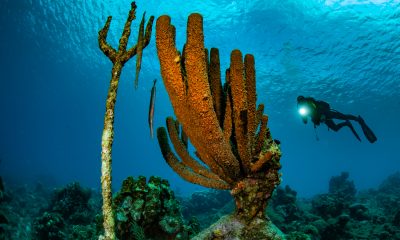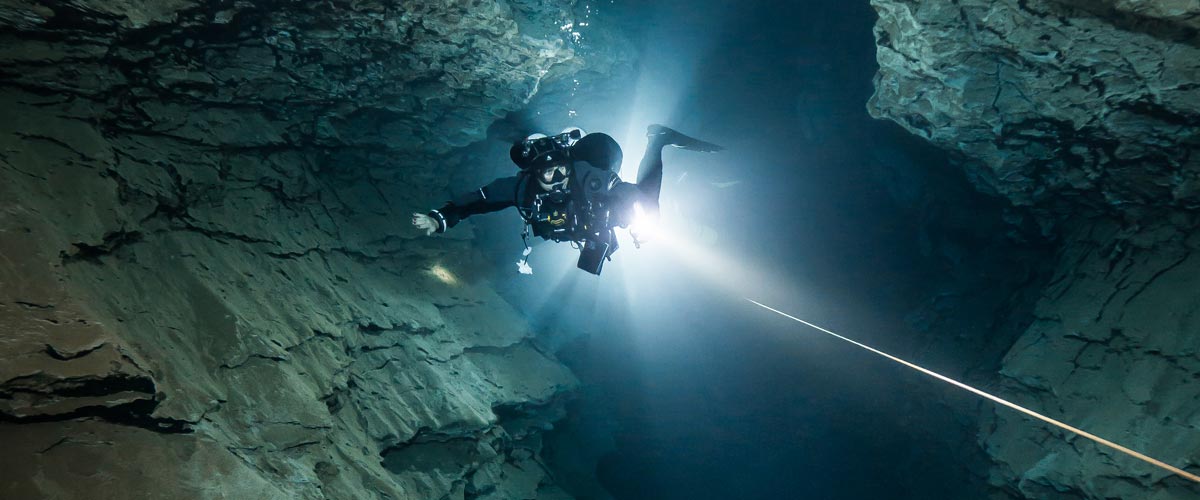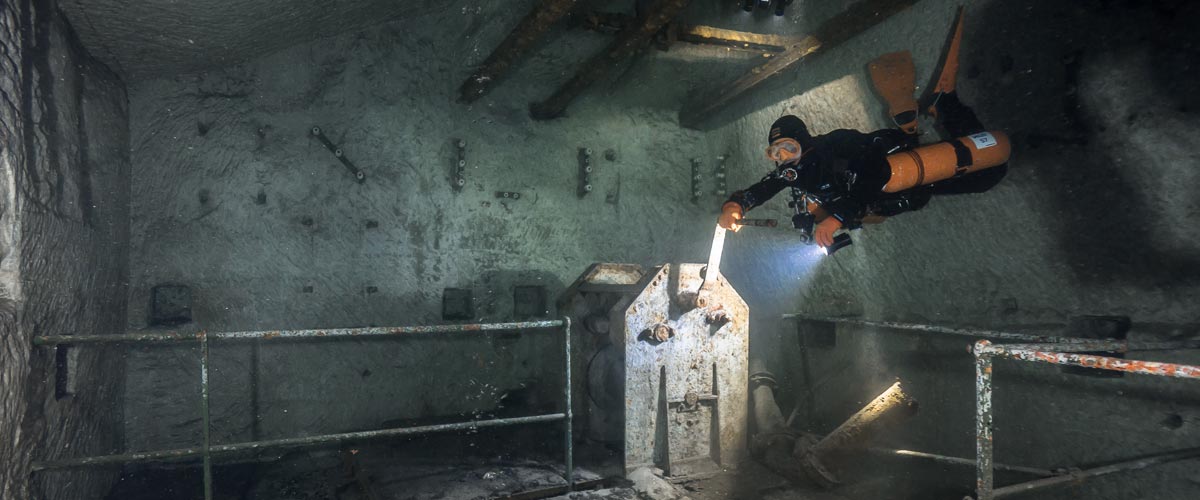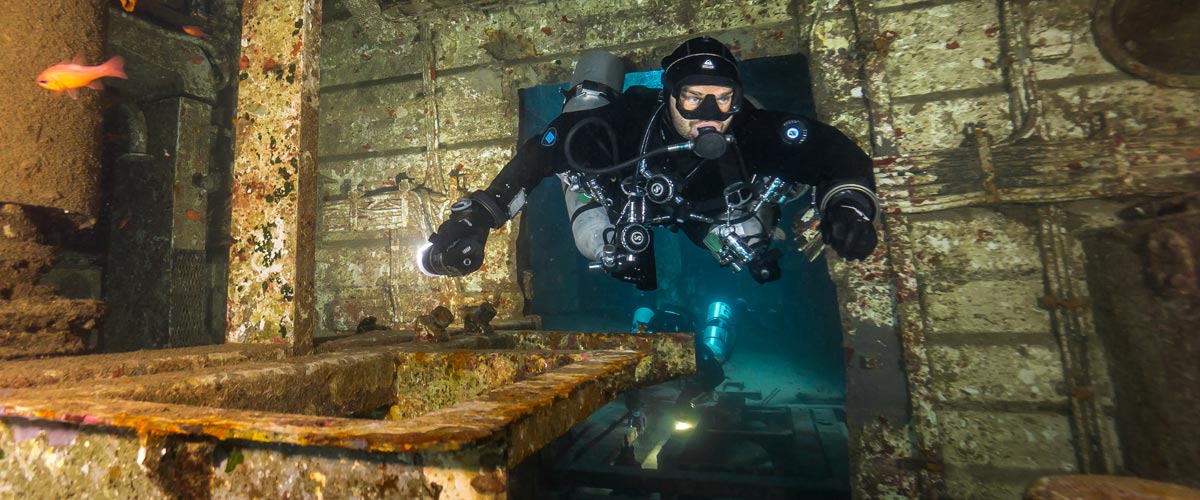Dive Training Blogs
Dive boat motion sickness: how to cope with and avoid
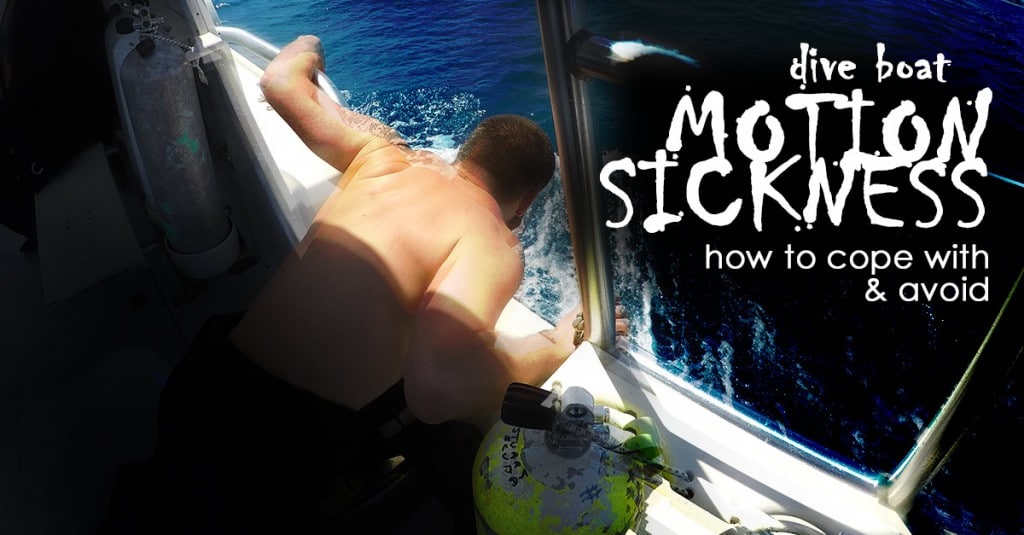
By: Aaron Lazar
You’re out on a dive boat for what you hope is going to be a fun filled day of exploring beneath the surface. Conditions are a little rough, but you make it to the first drop site and the dive goes off without a hitch. Upon surfacing, you see the wind has picked up some and that surface conditions are a little choppier. As the dive boat nears to pick up you and your buddy you can’t help but notice it pitching dramatically, bow to stern. Rock n’ roll! You get back on the boat and to your seat, still rocking. As the crew picks up the rest of the group, you begin to feel a little queasy. The boat bobbing around at idle doesn’t help. Your buddy says your face looks green and asks if you’re ok. You begin to feel like you may throw up and wonder if doing the second dive is a good idea.
Whether you’re personally susceptible to motion sickness or just caught off guard in rougher than expected conditions, getting sick on a dive boat can really put a damper on the day.
Luckily there are several quick tips and tricks you can use to avoid and cope with getting sick on the boat…
To start off, there are a couple things you can do before even showing up at the dock for your dives. While you may have booked your seat on the boat well in advance of the actual trip, it is still a good idea to check the local boating/marine forecast before heading out. Look for predicted winds along with wave heights and periods. There’s a big difference between 2-4 and 4-6 foot seas. It’s nice to have an idea ahead of time of the conditions you will be diving in. Of course, if conditions are too rough and a threat to your or anyone else’s safety, the crew or associated dive center will cancel the boat.
Consider taking some medication the night before
If conditions are forecasted to be on the rough side or if you know you are prone to motion sickness, you may consider taking some medication the night before. Over the counter options such as Dramamine and Bonine can help, but need to be in your system well before you ever get on the boat. Because of this, it is recommended that you begin taking the medicine 12 hours or more before you plan to hit the water. Be aware that Dramamine may induce drowsiness although there is a ‘Less Drowsy’ option available. There are also pressure applying wrist bands made specifically for motion sickness and patches worn behind the ear that slowly release medicine.
It’s a good idea to eat
… but not too much … before heading out to the boat. Try avoiding heavy foods with lots of grease and consider opting for a lighter option such as an energy bar or pretzels. It’s generally not a good idea to dive on an empty stomach. Just remember to take it easy.
Once at the dive boat, the location where you are seated may also impact your susceptibility to motion sickness. On most boats there is outside seating towards the stern (back) of the boat and, if given the option, this may be a good place to sit. The smell of the boat’s exhaust can contribute to queasiness, so being out in fresh air with a breeze can help dramatically. If you do begin to feel sick, the last place you want to go is in and below deck. While many dive boats do have a marine head in the v birth, going here … especially if you are already feeling sick … is a real recipe for disaster. If you’re feeling nauseous, try to stay outside and avoid concentrating on things on the boat. Look out at the horizon or even close your eyes. Breathe deeply and try to relax. Try sipping cool water or sucking on some ginger. Ginger is a natural remedy for motion sickness and can be purchased in capsule or even candied form which is perfect for taking along in your dry bag.
Don’t try to hold it in
If you get to the point where you feel like you may throw up, don’t try to hold it in. Make your way quickly to the side of the boat where you can do your thing over the edge. Buckets also work if edge throw up seating is occupied … just avoid doing it all over the deck. You will likely feel a lot better after vomiting and, if dealing with a supportive crew, they may even give awards for furthest puke projectile distance. Be sure to check out our article, “The Complete Guide to Throwing Up Underwater,” which covers instances where you may be sick but not on the boat.
It’s common for people stricken with motion sickness to want to avoid getting back in the water. If doing a two tank trip, for example, it can be tempting just to sit out the second dive. While this may be the appropriate choice to make at certain times, generally staying up on the boat will only make the motion sickness worse. Many divers will feel better once back underwater and away from the constant rocking and pitching of the boat. Just remember that we dive to have fun … so if you’re truly miserable, going back in the water may not be the best option.
Dive more!
This brings us to the last point relating to motion sickness on dive boats. Dive more! For people new to boat diving or diving in conditions that are rougher than they are used to, it may take some practice. The more you get out and dive, generally the more comfortable you will be … on boats and in the water. Remember that getting sick on boats can happen to the best divers and it’s nothing to be ashamed of. Armed with these quick tips and tricks though, you should be able avoid and better cope with the effects of boat related motion sickness. Now go make a reservation for your next boat dive!
To find out more about International Training, visit www.tdisdi.com.

Blogs
Intro to Tech: What is it about?
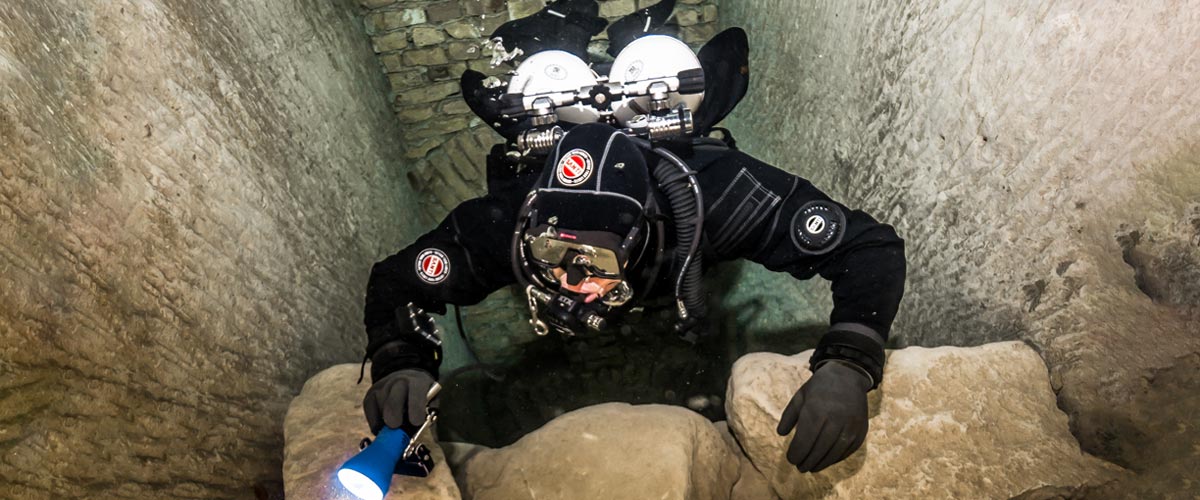
Article by José Pablo Mir
Pictures by Cezary Abramowski
The world of technical diving is exciting. It opens the door to new sites, depths, and bottom times. More importantly, it opens our minds to a new way of planning, facing, and experiencing dives, even those not purely technical.
Becoming a technical diver is a process, and like in other aspects of life, we should find the proper entry point that suits us best based on our knowledge and experience. The Introduction to Technical Diving course from TDI -the world’s largest and most recognized technical diving teaching organization- is the best option for divers who have yet to gain experience in the fundamental aspects of this new practice. The course’s content and its embrace of new techniques and technologies make it possible to acquire a solid foundation to learn and gain experience in this practice properly.
Becoming a technical diver is not something that happens overnight, whether deciding to become one or receiving a certification card stating we are now technical divers. It is a slow process extending farther away than any introductory course. It requires effort and dedication. But it will bring us satisfaction from day one -or two.
It is a matter of mentality
First, we must understand and accept that technical diving, involving greater depths, longer bottom times, exotic gases, virtual or real ceilings, and more, comes with higher levels of risk than the sport diving we have been practicing until now.
Although this discussion usually starts with a warning about risks, as I’ve done in the previous sentence, our practice is not a game of chance.
Technical diving is a rational activity that requires maturity and good judgment, and we will put everything into ensuring that each dive is a successful one -meaning we return from it safe and sound. With this understanding, we will strive to establish a mental attitude more aligned with our practice and its realities.
This new “technical diver” mindset we will develop will lead us to be more cautious in our executions, more analytical in our plans, more rational in our strategies, and more detailed in our procedures.
Experience will keep teaching us to know ourselves better, to keep our anxiety and other emotions under control, and to manage our impulses. Over time, our senses will sharpen, and we will be more attentive to the particulars of the situation we find ourselves in.
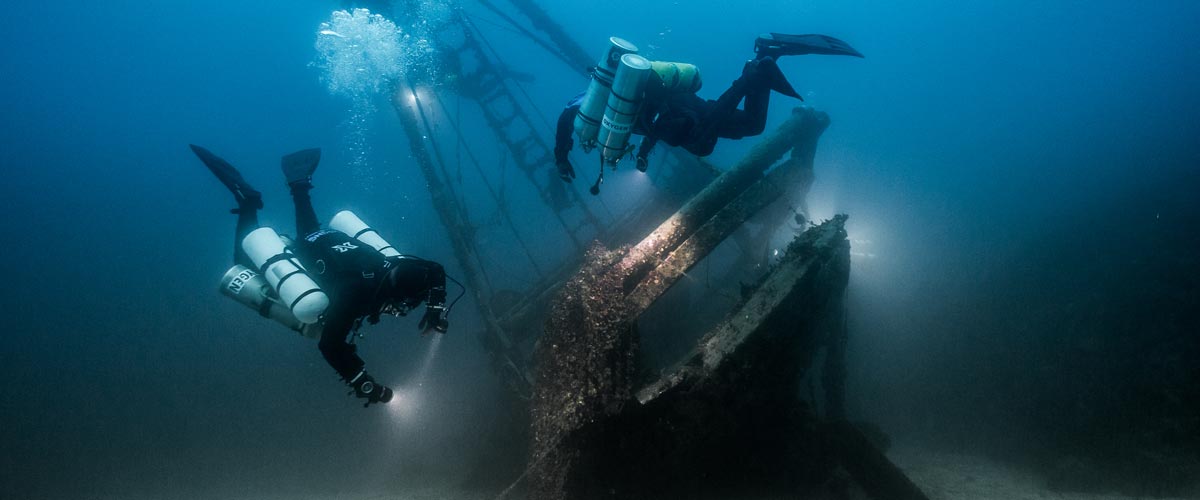
Strategies and procedures
Our strategies, those broad guiding lines tracing the path to follow, from how to approach planning to where, with what, and how we are willing to get there, will be more specific and more practical. Not because they magically become so, but because we will consciously and deliberately frame them that way.
We will establish clear, concise, and realistic procedures. Not only for the undesirable situations that may present themselves but also for those that are part of our dive objectives.
Even though, as technical divers, we often use equipment different from what we were previously accustomed to, it is essential to note that the gear does not make the diver. In a way, we could consider such equipment as the necessary tools to implement what our goal seeks to achieve, according to our strategies and procedures.
Technique plays an important role
We must put our greatest effort into learning and perfecting the different techniques we will be acquiring. Buoyancy, trim, propulsion, cylinder handling, deploying DSMBs and lift bags, valve drills, and more are essential skills we must begin to master to progress in our art. What we cannot do, when we need to do it, can harm us.
Our techniques must be effective and achieve the purpose for which they were devised. But they must also be efficient and require the least resources possible, including the time they take and the effort they demand. Effectiveness and efficiency will prevail over beauty and other considerations that may come to mind, although none of them should be mutually exclusive. A technique executed efficiently and effectively tends to have an inherent beauty.
Refining techniques is a lifelong mission. Some of them will be easy to master from the go; others, on the other hand, will be our life mission and will require many repetitions just to resemble the idea we have in mind of how they should be executed.
We must consider the environment
Our learning, the needs and musts of the practice we engage in, the experience we gradually gain, our strategies and procedures, and even our equipment and tools change with the environment.
Diving in the ocean, everything about us must be suitable for ocean dives. Conditions there rarely emulate those found in a pool, lake, or river. Variable winds and currents, greater depths, visibility conditions, other divers with uncertain skills around us, marine life, maritime traffic, distance from the coast, and many other factors add complexity and uncertainty.
It is never necessary to master the pool on the first day, but planning and aspiring to gradually cope with the ocean’s conditions is essential.
The cost of good training
We are aware that our resources are often scarce in relation to the possibilities of use we could give them if they were not. To a greater or lesser extent, we are part of the economic reality in which we are embedded.
Fortunately, the cost of good technical diver training is not an entry barrier. Comparing training and equipment costs, we see that the former are generally lower. Yes, lower cost for personalized service, essential to our future
performance and safety, than for a series of mass-produced products that are mere, albeit necessary, tools for an end.
The value of good training
The value of the training we received encompasses a range of characteristics, from emotional and methodological to technical and technological. TDI and its Introduction to Technical Diving course offer a deep and modern approach, with a teaching strategy that aims to create thinking divers, not merely obedient ones.
As technical divers, our knowledge is our primary tool. In this type of activity, what we don’t know can harm us.
Is this course optional?
Unfortunately, the fact that this Introduction to Technical Diving course is not a prerequisite for any subsequent training is an invitation to consider it optional. And we all know what usually happens to “optional” under budget constraints.
However, this course should be seen as optional only by those divers who are somehow familiar with the use of technical equipment, who have a mindset more in line with the requirements of this type of diving, who plan and execute the dives the proper “technical” way, who know their gas consumption rate, who are not intimidated by non-decompression tables, who feel comfortable using their dive computers, and know the techniques and have at least an acceptable level of buoyancy, positioning, and propulsion. Those can go straight to a more advanced training course, such as TDI’s Advanced Nitrox.
We must ask ourselves whether or not we are in that group.
Remember our goal: to have fun
Recreational diving is our passion. Jumping into the water carrying heavy equipment and having properly dotted our I’s and crossed our T’s have only one ultimate goal: fun. This is the activity we have chosen as a hobby. We must enjoy it; it must give us pleasure and make us vibrate.
Having a good time is not optional!
Blogs
Four opportunities to go pro in 2024 with Dive Friends Bonaire
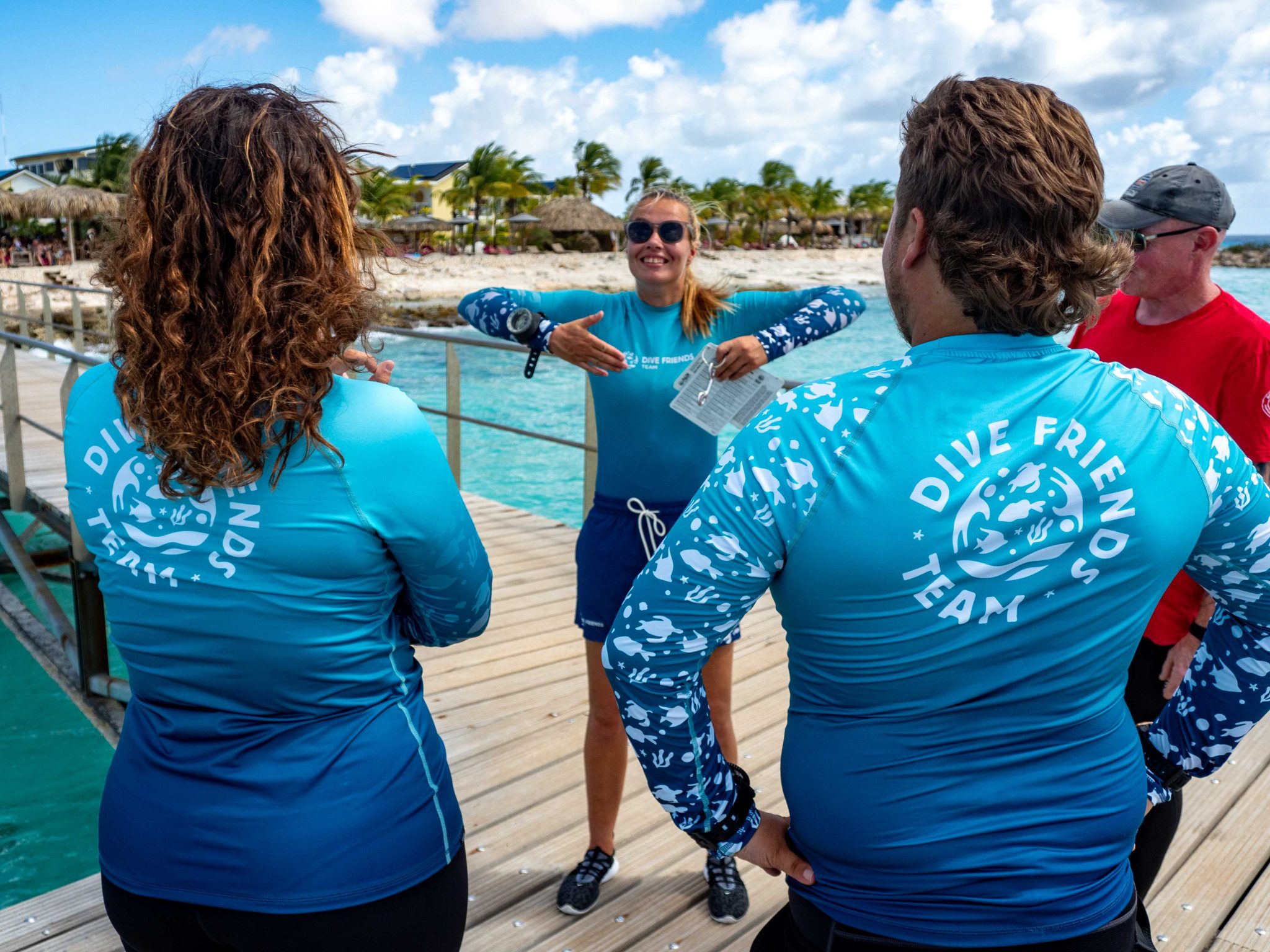
Dive Friends teaches the Instructor Development Course (IDC) several times a year to students who are eager to share their passion for diving with the world.
Dive Friends is known for the personal approach throughout the course. Their in-house course director will lead the students through every essential step, mentoring them to achieve their fullest potential as a dive instructor.
Applications for the following IDC start dates are now open:
- 12 April
- 5 July,
- 20 September
- 29 November
Partnership with Casita Palma
If the student opts for the IDC-Deluxe or IDC-Supreme package, their accommodation will be arranged for them at Casita Palma. This small and quiet resort is within walking distance from Dive Friends Bonaire’s main dive shop location and has everything you need to relax after an intense day of IDC training. Breakfast is included, so the student will always be fuelled and ready for their day.
Contact Dive Friends Bonaire’s Course Director Eddy for more information: coursedirector@divefriendsbonaire.com.
-

 News2 months ago
News2 months agoHone your underwater photography skills with Alphamarine Photography at Red Sea Diving Safari in March
-

 News2 months ago
News2 months agoCapturing Critters in Lembeh Underwater Photography Workshop 2024: Event Roundup
-

 Marine Life & Conservation Blogs2 months ago
Marine Life & Conservation Blogs2 months agoCreature Feature: Swell Sharks
-

 Blogs1 month ago
Blogs1 month agoMurex Resorts: Passport to Paradise!
-

 News3 months ago
News3 months agoDive into Adventure with Photo Pro Paul Duxfield in North Sulawesi this October
-

 Gear News3 months ago
Gear News3 months agoBare X-Mission Drysuit: Ideal for Both Technical and Recreational Divers
-

 Gear Reviews2 months ago
Gear Reviews2 months agoGear Review: Oceanic+ Dive Housing for iPhone
-

 Blogs2 months ago
Blogs2 months agoDiver Discovering Whale Skeletons Beneath Ice Judged World’s Best Underwater Photograph









